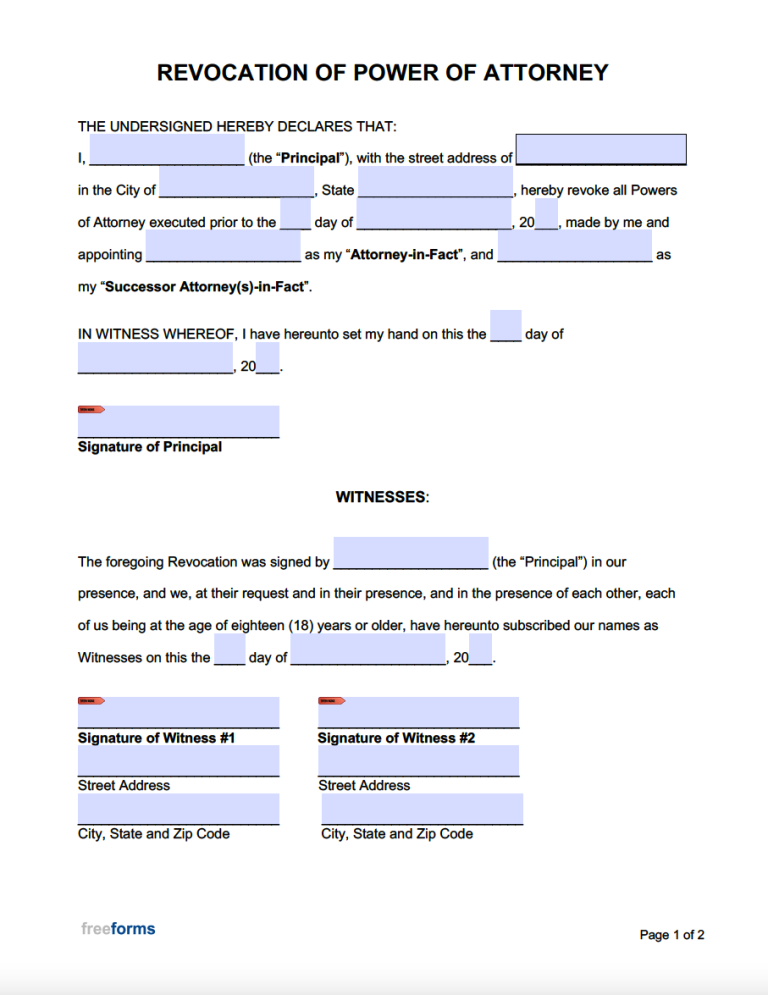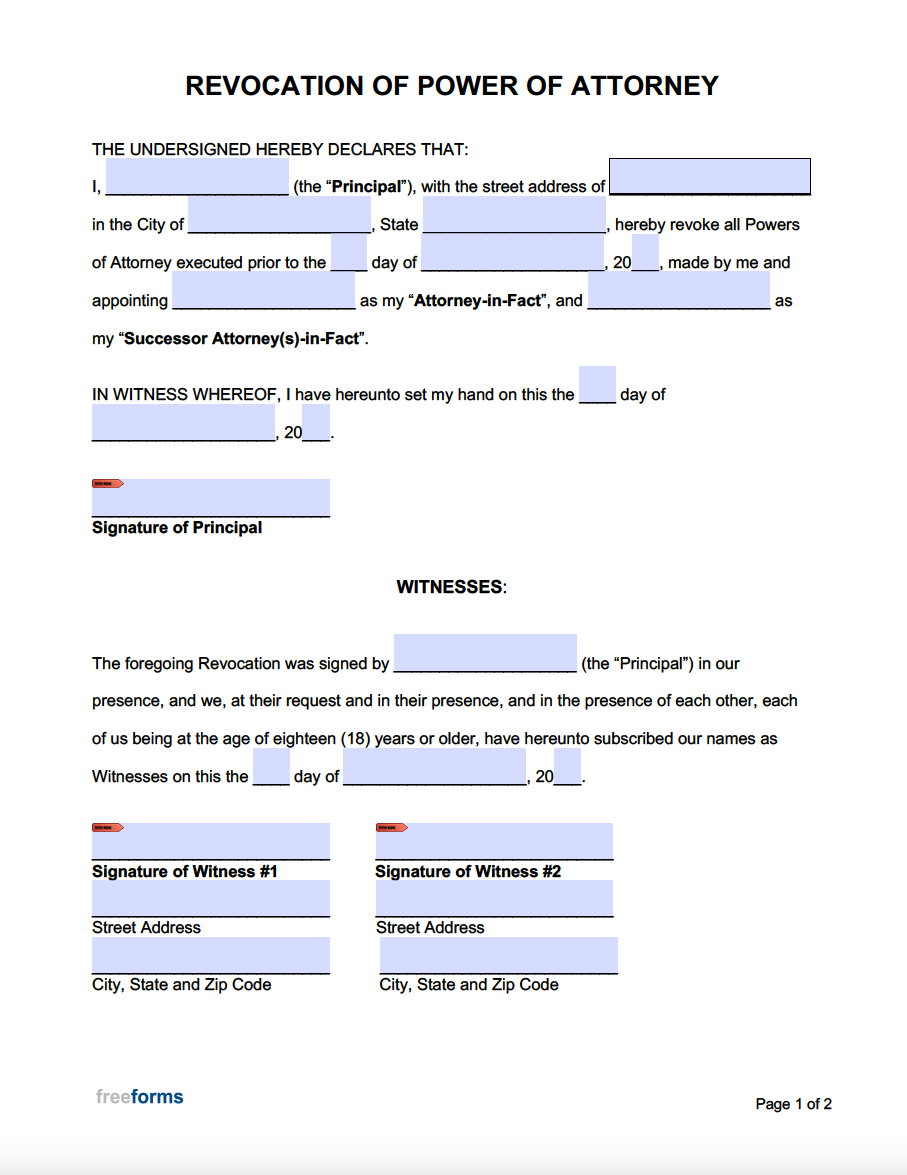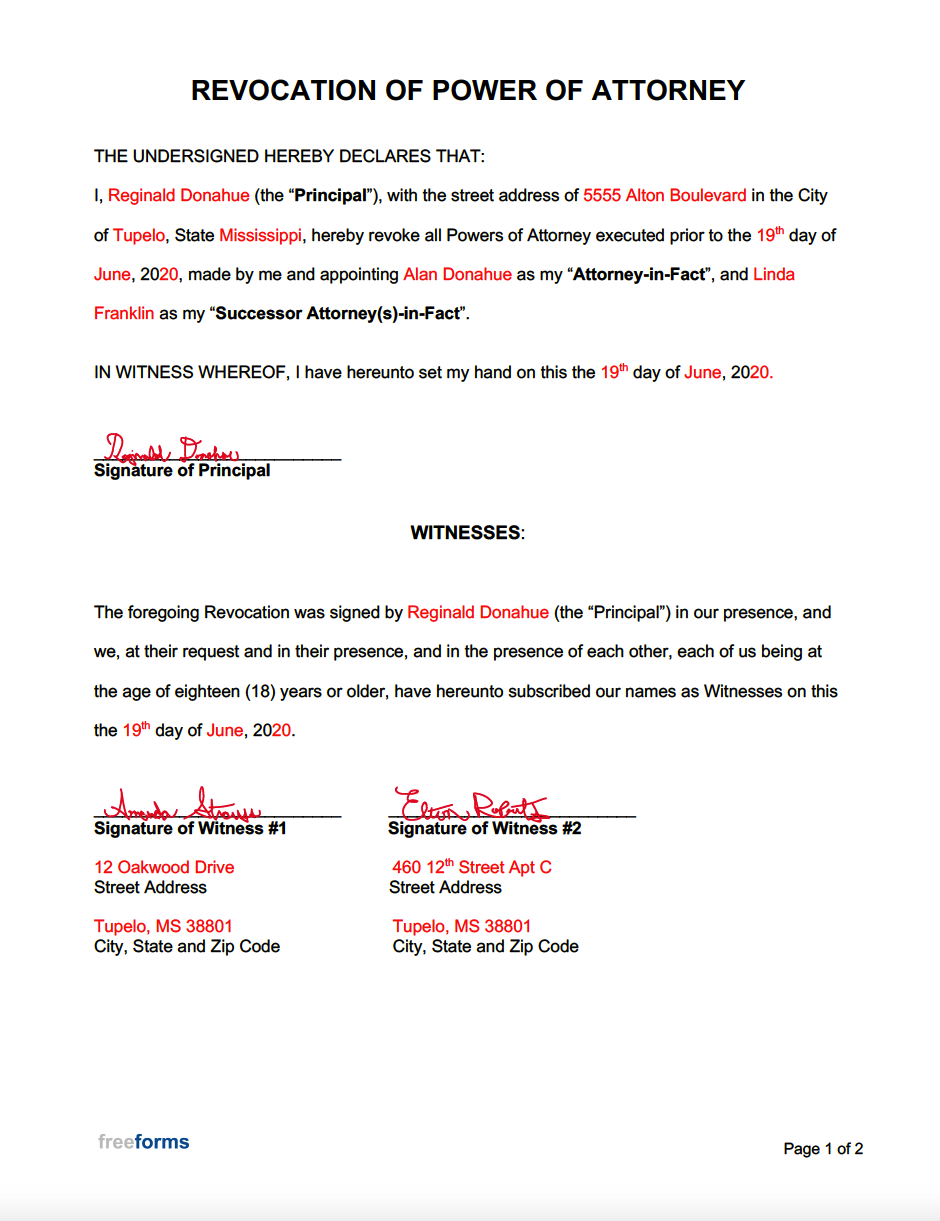By State
- Alabama
- Alaska
- Arizona
- Arkansas
- California
- Colorado
- Connecticut
- Delaware
- Florida
- Georgia
- Hawaii
- Idaho
- Illinois
- Indiana
- Iowa
- Kansas
- Kentucky
- Louisiana
- Maine
- Maryland
- Massachusetts
- Michigan
- Minnesota
- Mississippi
- Missouri
- Montana
- Nebraska
- Nevada
- New Hampshire
- New Jersey
- New Mexico
- New York
- North Carolina
- North Dakota
- Ohio
- Oklahoma
- Oregon
- Pennsylvania
- Rhode Island
- South Carolina
- South Dakota
- Tennessee
- Texas
- Utah
- Vermont
- Virginia
- Washington
- West Virginia
- Wisconsin
- Wyoming
What is Revocation of a Power of Attorney?
When the issuing party no longer requires the powers instated by a POA agreement, termination of the original arrangement can be carried out with a revocation of power of attorney form. After the paperwork is completed and signed, the terms of reversal will go into immediate effect, voiding the primary contract. Once finalized, the document is advised to be distributed to the attorney-in-fact and all associated successor agents to give all parties notice of the agency withdrawal.
Reasons to Revoke a Power of Attorney
There may come a time where the previously granted agreement is no longer of use to the principal. Some examples of scenarios where this may be the case are as follows:
- The primary purpose of the arrangement has been served – Upon fulfillment of the specific needs of the principal, termination of the contract can be drafted.
- Adjustment of the contract is necessary – When the declaring party wants to amend the terms, conditions, confirmed agents, and/or stipulated privileges to the agreement.
- Death or incapacitation of the agent occurs – Upon the passing of the named agent, or in cases where they are deemed mentally or physically incapacitated, the revocation should be carried out as a practical measure.
- The declarant’s relationship with the designated agent has shifted – In the event that the relationship between the declarant and attorney-in-fact changes, the issuing party can choose to negate the initial endowment of rights.
- The appointed agent cannot perform the assigned duties – When the availability or competence of the attorney-in-fact comes into question, the principal can elect to revoke the POA.
How to Revoke a Power of Attorney
- Step 1 – Select the State-Specific Revocation Form
- Step 2 – Complete the Form as Instructed
- Step 3 – Execute the Document
- Step 4 – Notify the Attorney-in-fact
- Step 5 – Secure the Filing
Step 1 – Select the State-Specific Revocation Form

Every state has a unique document designed explicitly for revoking a power of attorney agreement. It is necessary to obtain the specific state form to adhere to each state’s respective regulations accurately. Once the correct contract is ascertained, the PDF or Microsoft Word (.docx) can be downloaded, printed, or launched (via the provided PDF editor) for completion.
Step 2 – Complete the Form as Instructed

Review the paperwork and fill in the blank spaces with the requested information. Most state revocation forms require the following details related to the original power of attorney arrangement:
- Name of the Principal
- Address of the Principal
- Name of the Designated Agent
- Name(s) of Successor Agent(s)
- Date of Execution (of original POA)
Additional space is provided to indicate the date that the revocation agreement is to be signed.
Step 3 – Execute the Document

When it comes time for the declaring party to sign the form, it is crucial first to revise the corresponding state law regarding the acknowledgment process. Every individual state page refers to the requirements for effective endorsement, listing the legally mandated attestation and/or notarization demands. Examine the state-specific page above by selecting the link for your state to confirm the designated legislative requisites.
Step 4 – Notify the Attorney-in-Fact

After finalizing the previous filing’s cancellation with the revocation paperwork, it is recommended to inform the prior agent of the contract’s reversal. The best way to accomplish delivery is to send a copy or a second executed form to the former attorney-in-fact utilizing certified mail. Announcing fulfillment of the invalidation of the previously instated POA will ascertain confirmation that the annulment information was adequately supplied to the recipient.
Step 5 – Secure the Filing

The principal should retain the original document to prove the official dissolution POA arrangement if it is ever challenged. Doing so will ensure that if the termination of the primary agreement ever comes into question, it can be successfully rebuked with concrete proof.
Sample Revocation of Power of Attorney
Download: Adobe PDF, MS Word (.docx)




